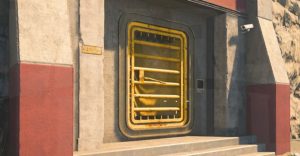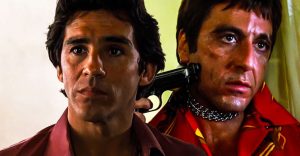Doctor Who: Time Lord Regeneration Rules, Limits & Plot Holes Explained

Regeneration might seem like a simple facet of Doctor Who lore, but as the show has progressed, this plot device has become riddled with restrictions, loopholes and contradictions. Alongside Doctor Who’s iconic theme tune, the TARDIS, and the sonic screwdriver, the transformations of Time Lords have become a signature part of the show’s mythos, though it was borne out of dire necessity rather than by cunning design.
With William Hartnell in place as the First Doctor, Doctor Who swiftly became a cultural phenomenon. But three years after its inception, problems had already began to emerge. The veteran actor’s health had deteriorated, meaning that acting and remembering lines was becoming too difficult for him, and he did not get along with the new production team that replaced Doctor Who’s original showrunners. As tensions continued to rise, the BBC faced the tricky choice of either recasting the now iconic Doctor or cancelling the show. The answer is obvious to us now, but in the 1960s this kind of move was almost unheard of, and there was still a lot of uncertainty over the idea: would Doctor Who itself even acknowledge the change? And how would the story explain it away? As it famously transpired, the show accomplished both to great effect after story editor Gerry Davis decided to use the Doctor’s extra-terrestrial origin to facilitate the change.
The concept of the Doctor frequently gaining a new body – and distinctive new personality – has undoubtedly become one of Doctor Who’s greatest strengths. The show can literally reinvent itself alongside its main character, allowing it to move with the times and appeal to fresh audiences. But whilst this clever idea has helped the show endure for over half a century, the specifics of regeneration itself have not aged as gracefully. Due to Doctor Who’s rocky history – and the fact that its canon has been gradually embroidered and retconned by an increasing number of writers – the particulars of this process have been hastily constructed, and are as confusing as the time streams and realms that the show’s mysterious hero traverses.
How Regeneration Actually Works

Though the in-universe origin of Time Lord regeneration is somewhat unclear (more on that later) it usually transpires when the Doctor’s body is harmed and unable to heal itself normally. The time traveller’s body gradually generates a powerful, eventually explosive burst of regenerative energy, which repairs and later reshapes the body. Since Doctor Who‘s return in 2005, this has been realized by the character’s body emitting that iconic, tell-tale iconic golden glow that is somewhat reminiscent of the Beast’s curse being lifted in Disney’s Beauty and the Beast. This fiery power lingers for hours afterward, often granting the Time Lord an increased healing factor and an enhanced level of strength for a limited period whilst the mutation is completed.
The Time Lord’s transition into a new form is the most significant part of this healing process. Indeed, it’s pretty unnerving for audiences (and the Doctor’s companions) to see a new figure emerge in place of the former, still wearing the same clothes. Then again, this uncanniness is rather appropriate. Famously modeled on the unsettling horror of a “bad acid trip,” the Doctor has repeatedly discussed how disorientating and incredibly painful the metamorphosis is as his/her body and mind are rewritten. The Tenth Doctor (David Tennant) even commented that this intense physical pain, coupled with the total loss of their prior personality, meant that regeneration felt like dying anyway.
Moreover, it can be so traumatic that, for a short while afterwards, the Time Lord is prone to erratic behavior; for example, the Sixth Doctor (Colin Baker) became intensely paranoid and attempted to strangle his companion, the Eighth and Twelfth (Paul McGann and Peter Capaldi) suffered acute bouts of amnesia, and the Tenth Doctor was incapacitated for hours afterwards. Similarly, whilst Time Lords essentially retain their soul and core values (such as the Doctor’s compassion and hatred of injustice), there can be a substantial difference between the personalities of these incarnations. Both the Doctor and the Master have expressed preferences for particular past iterations whilst criticizing the choices of the others, even though they were (or will be) them at some point.
The Rules Of Regeneration Explained

The first and foremost restriction of regeneration is that – outside the Kastrians and other minor races who use equivalent, cruder techniques – it is largely exclusive to Time Lords. Nevertheless, there have been several exceptions to this in Doctor Who’s past. Due to her conception aboard the TARDIS, the human River Song (Alex Kingston) was born with the power to regenerate as the Doctor does. Similarly, Captain Jack Harkness (John Barrowman) and the Gallifreyan/human hybrid clone Jenny (Georgia Tennant) demonstrated similar feats of recuperation after usually fatal injuries, but without the bodily transformation.
Otherwise, the power of rejuvenation remains a miraculous and highly coveted trait. Indeed, characters such as Mawdryn (David Collings) and the Family of Blood have attempted replicate or steal this power, but their actions are shown to incur disastrous consequences. For Time Lords though, regeneration is filled with opportunity. Not only can they swap between race (such as the General does) and gender (the Corsair, the Master/Missy and Doctor) there is the potential for non-humanoid forms, since several of the Doctors have been shown checking that they were bipedal immediately after they had changed.
Additionally, though Time Lords can regenerate into an already aged body (such as the Twelfth Doctor), there is no set lifespan for an individual life. The Doctor has been shown surviving for centuries in one incarnation alone and given that his/her life is a risk-filled one, it’s implied that these regenerations could survive for much longer. Yet whilst regeneration might seem like the key to limitless possibilities – and seemingly, even immortality – Doctor Who has ultimately shown that is not the case. Even if they avoided accidents and illnesses, each form would eventually wither and die from old age, as the First and War Doctors did. So, despite their huge longevity, a Time Lord would eventually reach the ultimate limit of their regenerative cycle and pass away for the last time.
Certainly, Doctor Who’s canon has sparingly confirmed that Time Lords can only regenerate a total of twelve times (resulting in thirteen lives), but only if they wish to live them. In “Twice Upon A Time” the First and Twelfth Doctors demonstrated that, if Time Lords are reluctant to the upcoming change, they can temporarily suppress it and enter a “state of grace” where they are healed and remain in the same form for an extended interval. However, they are still forced to either change – or else perish – at some point shortly afterward. The Master (John Simm) negated this limbo entirely and died in “Last of the Time Lords” because he wished to avoid imprisonment and simply chose to not regenerate. On a similar note, the Time Lord device known as the Chameleon Arch essentially transformed a Time Lord into a human– and consequently removed both the Time Lord’s consciousness and regenerative ability. The inference here is that if these essences were never restored to their rewritten bodies, the humans would die and the Time Lord’s soul would be lost as well.
Furthermore, even if Time Lords submit to regeneration, it can falter midway through, thus requiring the assistance of the TARDIS or fellow Time Lords to ease them along, as K’anpo Rimpoche (Kevin Lindsay) did for the Third Doctor in “Planet of the Spiders.” This gifting of energy can even result in an independent premonition of their future selves, such as the mysterious Watcher who dissolved into the Fourth Doctor (Tom Baker) as he died and helped him transform into the Fifth Doctor (Peter Davison). On another note, the Twelfth Doctor showcased that Time Lords can transfer their energy to restore non-Gallifreyans as well. Yet this is kind of healing is rarely done by Time Lords since it their power levels are substantially drained, resulting in an adverse effect upon their future regenerations. Time Lords can also be definitively killed mid-way through their change when they are in a weakened state. And, across the Doctor’s travels, he/she has encountered maladies, toxins and diseases (such as Chen-7 in “The Girl Who Waited”) so severe that they could bypass any remaining regenerations and kill him/her outright.
Regeneration Limits & How To Avoid Them

Doctor Who largely posits that regeneration is a question of “change or die” for Time Lords, although the show has offered some degree of wriggle room for these characters. For example, the transformative aspect of the process can be avoided in very rare situations. In “Journey’s End” the Tenth Doctor began to regenerate after he was shot by a Dalek. But, as soon as he was healed, the Doctor cast off the remaining regeneration energy, and he stayed as he was because there was not enough left to power the change.
It must be noted that, in this instance, the Doctor still used up one of his lives, and he was only able to regenerate in this way because he could channel his powers into a compatible receptacle – namely his handily preserved severed hand. In typical swashbuckling fashion, the Doctor had lost this hand during a sword fight with the Sycorax leader (Sean Gilder) in “The Christmas Invasion”, but thanks to his recent renewal, he was able to regrow a new one in its place. Given the extraordinary circumstances of this regeneration in “Journey’s End” – which later included the inadvertent growth of a new Doctor-clone from the aforementioned lost hand – it’s unlikely that this kind of regenerative bypass happens often in the world of Doctor Who.
Furthermore, “The Deadly Assassin” might have established the rule of twelve regenerations all the way back in 1976, but this number is not always absolute either. The ruling Time Lord authorities have the power to can grant brand new regenerative cycles and fresh bodies to Time Lords if they so choose – though it doesn’t happen often. The Master was gifted this new lease of life to fight against the Daleks in the Time War, and the Doctor received an additional thirteen lives on the eve of his death in “Time of the Doctor” in thanks for saving Gallifrey. The show has even posited that this is not the first time that the cycle has been renewed, and that the Doctor enjoyed a whole series of personas off-screen before the events of Doctor Who even began.
Alternatively, Time Lords – or rather the Master – have shown that they can survive past the end of their regenerative cycles if they are able to transfer their consciousness into other bodies. The Master demonstrated this by possessing Tremas of Traken (Anthony Ainley) so that he could commit further crimes and continue his crusade against the Doctor. Similarly, the Master (Eric Roberts) would later attempt to steal the Doctor’s body and regenerations in the 1996 television movie after he had been executed by the Daleks. In the interim, he existed in a crude sludge like form when he wasn’t possessing anyone. Furthermore, it transpired that the Master had devised a dark way of resurrecting himself after he had refused to regenerate in “Last of the Time Lords”; however, his estranged wife Lucy Saxon (Alexandra Moen) attempted to stop the delicate ritual in “The End of Time”. The Master still managed to return to life – albeit with his life force critically depleted and his vitality in a constant, painful state of flux.
Doctor Who Regeneration Plot Holes

Regeneration is generally straightforward for Doctor Who fans to follow. However, due to the show’s long history, several stories and details have contradicted each other over the years, and it’s even unclear how Time Lords acquired the ability to regenerate in the Doctor Who universe because the show offers two conflicting theories. The first is that they were genetically engineered by Rassilon, the legendary – yet malevolent – Lord President of Gallifrey and founder of Time Lord society. Rassilon famously developed a technology known as the Rassilon Imprimatur – a code that modified Time Lord cells so that they were perfectly adapted to both manipulate time and travel through it. The Imprimatur’s specifics are admittedly rather sketchy, since the Second Doctor (Patrick Troughton) was partly bluffing to fool the Sontarans as he explained this genetic modification in “The Two Doctors”. Nevertheless, because this code lent Time Lords one of their signature traits, fans have generally assumed that regeneration was similarly granted by the Imprimatur.
This line of thought is also supported by the hierarchy on Gallifrey itself. Not all Gallifreyans are Time Lords, nor do the majority have the ability to regenerate. Time Lords are seen as the upper crust of Gallifrey, and denizens must enter the draconian Academy if they wish to become part of this elite class. Again, this implies that regeneration is attained, not inherited. Conversely, in “A Good Man Goes To War”, Madame Vastra (Neve McIntosh) recalled that the Eleventh Doctor had specified that the gap in reality on Gallifrey – known as “the Untempered Schism” – had caused the Time Lords to naturally evolve that way over billions of years. Of course, it is plausible that Rassilon could have harnessed this natural ability and selectively gifted it to those that the Gallifreyan establishment saw fit.
Another major issue relates to one how much the Doctor and his/her species can influence the kind of body and personality that they will change into. The Sisterhood of Karn possessed potions which could influence the result of a regeneration, and the Eighth Doctor used their elixirs to fashion himself into the kind of warrior that would end the Time War. But some Time Lords have demonstrated a way of choosing their next regeneration without assistance. As the Master’s guise of Professor Yana (Derek Jacobi) perished, he expressed the desire for a younger, stronger body akin to the Tenth Doctor, which he received mere moments later when he regenerated. Additionally, Doctor Who canon has long attempted to explain away Romana’s irregular regeneration, where she perused a selection of personas that appeared in front of her before she selected one of them.
The Eleventh Doctor’s death was analogous in this way, because he subconsciously chose to resemble Lobus Caecilius when he became the Twelfth Doctor to remind his future self to save anyone he could. “The Day of the Doctor” special also implied that the Doctor would be able to return to his/her previous incarnations at some point further down their timeline. It must be noted that these two plots are irregular within the Doctor’s story, because none of the incarnations have demonstrated this ability before.
And finally, there is still a debate as to whether Time Lords can recognize each other in their wide variety of forms. On several occasions, the show has posited that they can easily detect fellows of their species. The Tenth Doctor immediately knew who the Master was after seeing him on TV and asserted that Time Lords always could detect each other. Indeed, the Time Lord Drax (Barry Jackson) was shown to recognize the Fourth Doctor despite not seeing him since the Time Lord Academy some three regenerations prior. Yet, as with many things in Doctor Who, this talent is rather inconsistent. In the aforementioned instance with Drax, the Doctor was slow to even remember his classmate and, more recently, the Twelfth Doctor was unaware that Missy (Michelle Gomez) was the Master in female form until she revealed her identity to him, but perhaps Doctor Who will eventually shed more light on these inconsistencies.
About The Author

















